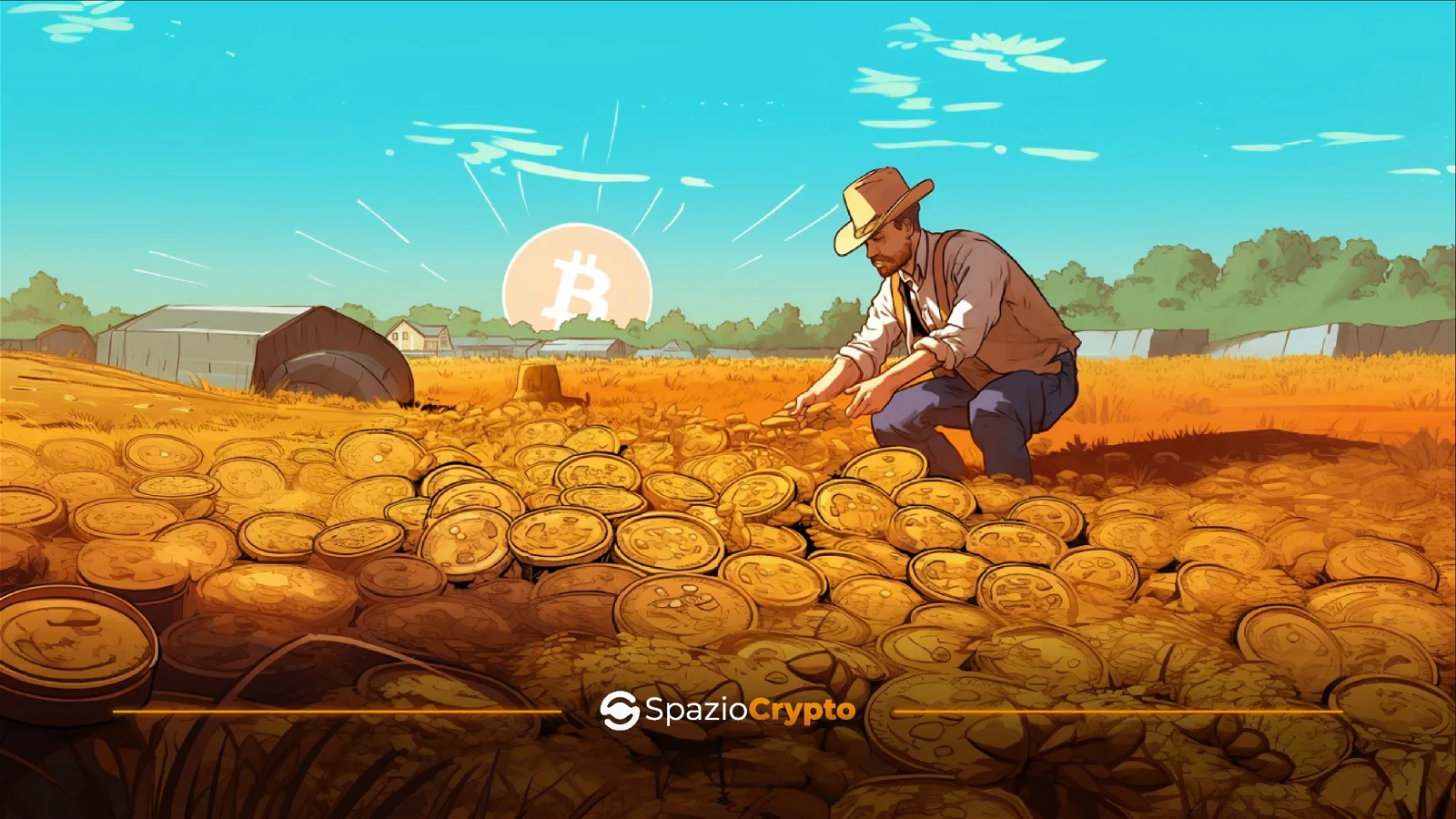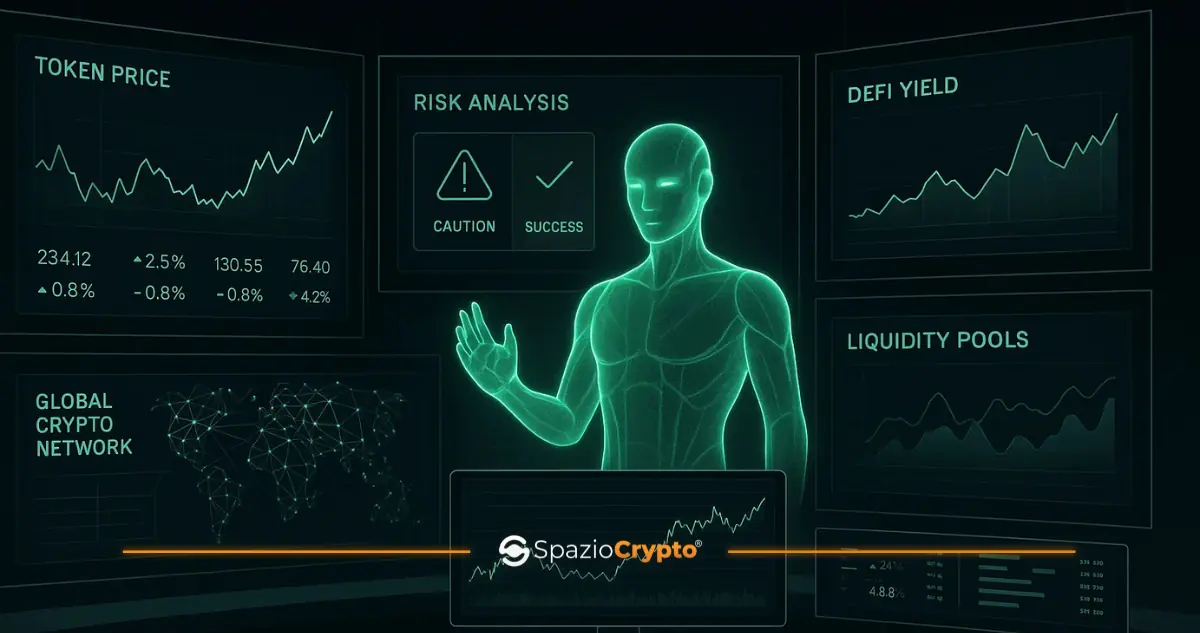Leaving everything behind to become a farmer, living off what you grow; a lifestyle on which mankind's survival was based has now become a mere pastime for the few. But in the digital age we live in, where farming is no longer a necessity, can we still turn to agriculture as a source of livelihood?
The term farming has now conglomerated within it a number of meanings other than the original one.
In fact, the translation of the term would be 'agriculture', yet the term is now also used in far-flung fields. In video games, for example, the term 'farming' indicates the performance of repetitive (often boring) actions, but which allow one to obtain resources or level up. On the other hand, farming is not so different: hoe, plant, water, harvest, start again.
Farming in the digital age is therefore the performance of repetitive actions, which are not much fun, but which almost certainly guarantee a reward for the one who performs them, and with the rise of blockchain and decentralised finance (DeFi), farming has also made its debut in the field of finance.
In this Spaziocrypto article, we will explore what Yield Farming is and how it works, introducing the reader to this primordial form of digital farming in the simplest way possible!
Introduction to DeFi and Yield Farming
How many were "on-chain" at the time of June and August 2020? During that time, the decentralised finance industry (DeFi) experienced rapid growth and adoption.
The total value of funds locked up in dApps (decentralised applications, in theory) rose from around $1 billion to over $10 billion in just a few months, this period is in fact nostalgically remembered as 'DeFi Summer'. During this period, many factors contributed to the blossoming of this phenomenon.
First, the development of new types of protocols based on collateralised lending, cryptocurrency exchanges in a decentralised manner and other very imaginative protocols took place. In addition, the COVID-19 pandemic, the lockdown that forced people not to leave their homes and the subsequent economic crises increased interest in decentralised financial alternatives and cryptocurrencies.
Many users saw DeFi as a way to access financial services without having to rely on traditional banks, and finally, many of the protocols offered incentives in the form of tokens (often worthless) in order to attract users to the platform. From there on, despite the ups and downs of the industry, DeFi has always played a leading role in the crypto industry and with it, Yield Farming.
Yield Farming is thus a process by which cryptocurrency holders can earn rewards, almost always in the form of additional cryptocurrencies (recently the trend of on-chain points has exploded), by providing liquidity to decentralised finance protocols (DeFi). For the uninitiated, we have already delved into some aspects of decentralised finance (DeFi), comparing it with centralised finance, and also examined the risks in depth.
In the introduction, we defined farming as a tedious activity, but one with almost guaranteed returns. In fact, although some risks are present, by maintaining a proper degree of care and judgement, yield farming allows for an excellent risk/return ratio.
On-chain returns vary as risk varies. Small protocols offer higher returns as fewer farmers have deposited their cash and enjoy the incentives. However, a small protocol is such either because it is new, or because it does not have too much confidence. For this reason they must offer higher yields, just as it works for government bond issues: Italian bonds offer a higher yield than German ones, precisely because the Italian economy is less solid than the German one, so the Italian state must offer a higher yield to convince investors to prefer Italian bonds instead of German ones. The more reckless, i.e. those who go in search of these small protocols that offer high returns are called 'Degen Farmers' by the community.
Evaluation of Protocol and TVL
The question now arises: how do you measure the size of a protocol?
The fundamental value through which we can assess the size of a protocol is the Total Value Locked (TVL).
This value indicates the value of the currencies deposited within the application we are analysing. The most reliable and widely used tool for making such assessments is Defillama. In a sense, the TVL represents the aggregate liquidity in liquidity pools. It is a useful index to measure the health of DeFi and the market as a whole. Moreover, it is an effective metric to compare the 'market share' of different DeFi protocols. It is possible to measure LTV in ETH, USD or even BTC.
Yield Farming: How is it done?
Now that we have introduced the concept, let's get into the details and try to understand how it is "farmed".
Let's say that after taking some profits during the bull market, you are waiting for the best opportunity to re-enter the market by holding stablecoins in your crypto wallet. While waiting for the retracement (without the n, mind you), it would be a great idea to put them to income!
Let's assume that you have decided to park your cash in USDC and USDT: you might look for a protocol that needs these two stablecoins in order to offer a certain service.
After a thorough research phase, you have identified a decentralised exchange with a high LTV and proven security that incentivises the deposit of USDC and USDT into their platform.
By offering your liquidity to the protocol, it will issue a token called an LP token (Liquidity Provided token). This acts as a receipt with which you can attest to the amount of USDT and USDC in the pool that belongs to you.
After you offer your stablecoins to the protocol, it will reward you with an interest rate consisting of:
- A portion of the commissions that traders pay on the exchange;
- The other portion from the incentives provided by the protocol.
The former tend to be given in the form of LP tokens, so they are not visible instantaneously but increase the amount of USDC and USDT that can be withdrawn when you return the receipt (LP token).
The latter can be paid in the form of the protocol's proprietary token or in third-party tokens. In this case, attention must be paid to the volatility of the token as it may multiply or halve the farming rewards.
In our example, we used two stable currencies, but it is equally possible to provide liquidity in volatile asset pools. However, in this scenario, it is important to bear in mind the risk of impermanent loss.
APY, APR and Returns: Measuring Efficiency
Let's now delve into how the offered interest rate is calculated.
Interest is always variable; there are few protocols that guarantee a certain interest rate (pendle.fi for example, which is quite complex to operate). Let us take a look at the variables together.
- As already mentioned, the interest rate also depends on the commissions traders pay to make their trades. On very active days, the interest rate will be higher, on less active days a lower rate will be perceived.
- The price of the token offered as an incentive also influences the interest rate: each pool is usually allocated a certain amount of tokens and the interest rate is usually calculated based on their current dollar value. If this value increases, then the interest rate increases as well.
- Finally, the interest rate also varies according to the participants: the more participants "farm" in the pool, the smaller the premium that is due to each one.
Usually, yields in yield farming are calculated on an annual basis. APR and APY are common parameters. APR does not consider composition, while APY does, but they are often used interchangeably.
However, estimates and forecasts are difficult due to the competitiveness of the market. If a strategy works, returns may decrease because more people follow it.
DeFi might adopt different parameters to calculate returns. It might be more useful to estimate returns on a weekly or daily basis because of the speed of the industry.
Collateralisation and Strategies: Optimising Yields
We have given the example where the chosen protocol is a decentralised exchange, but we cannot fail to mention the second main pillar on which yield farming and DeFi in general is based.
Some dApps allow you to use your cryptocurrencies as collateral in order to borrow other assets. MakerDAO, the subject of a detailed analysis of the protocol and its MKR token, stands out as the leading protocol for collateralised lending. It is known for its longevity, security and wide utilisation, with an LTV approaching USD 9 billion.
But it is not the only protocol of this kind, and even here, the various teams compete for farmers' liquidity by offering attractive incentives.
In some circumstances, paradoxically, it is possible to obtain a positive interest rate by borrowing assets! In this type of protocol, one must consider the risk of being liquidated if the collateral is not sufficient to secure the borrowed assets. Let us now see how we can combine these two protocols to best optimise the return on our portfolio.
Let us assume that you are a convinced Bitcoin Hodler. You know that BTC cannot be staked (you do, right?) so how could we leverage this asset to generate a return? You might consider depositing your (wrapped) BTC on a lending protocol and borrowing stablecoins to place in the pool of a Decentralised Exchange that offers compelling incentives.
This simple example demonstrates how interconnected the various DeFi protocols are like Lego bricks, making the whole ecosystem very dynamic but also risky. If one of the protocols were to face difficulties such as a hack or a malfunction, this could affect the functioning of the other protocols.
Farmer in the DeFi: Dream or Reality?
Now that we have introduced some basic concepts on yield farming, let us try to answer the question we posed at the beginning. Can this new concept of digital farming somehow be a source of income? The answer is undoubtedly positive as long as one has a thorough understanding of what one is doing and a detailed knowledge of the protocol and strategy adopted.
However, having to rely on the payment of interest rates, a not inconsiderable amount of assets is required to be able to 'make a living' from digital farming, especially if one does not want to be exposed to the volatility of cryptocurrencies, thus using stablecoins exclusively.
To conclude this article of Spaziocrypto's Web3 guide with an analogy, the digital farmer is the one who looks after his crypto portfolio, studies the strategies and protocols that can guarantee him a good risk/return ratio and who, just as the farmer waits for the harvest to ripen, waits for his interest rate to ripen.








